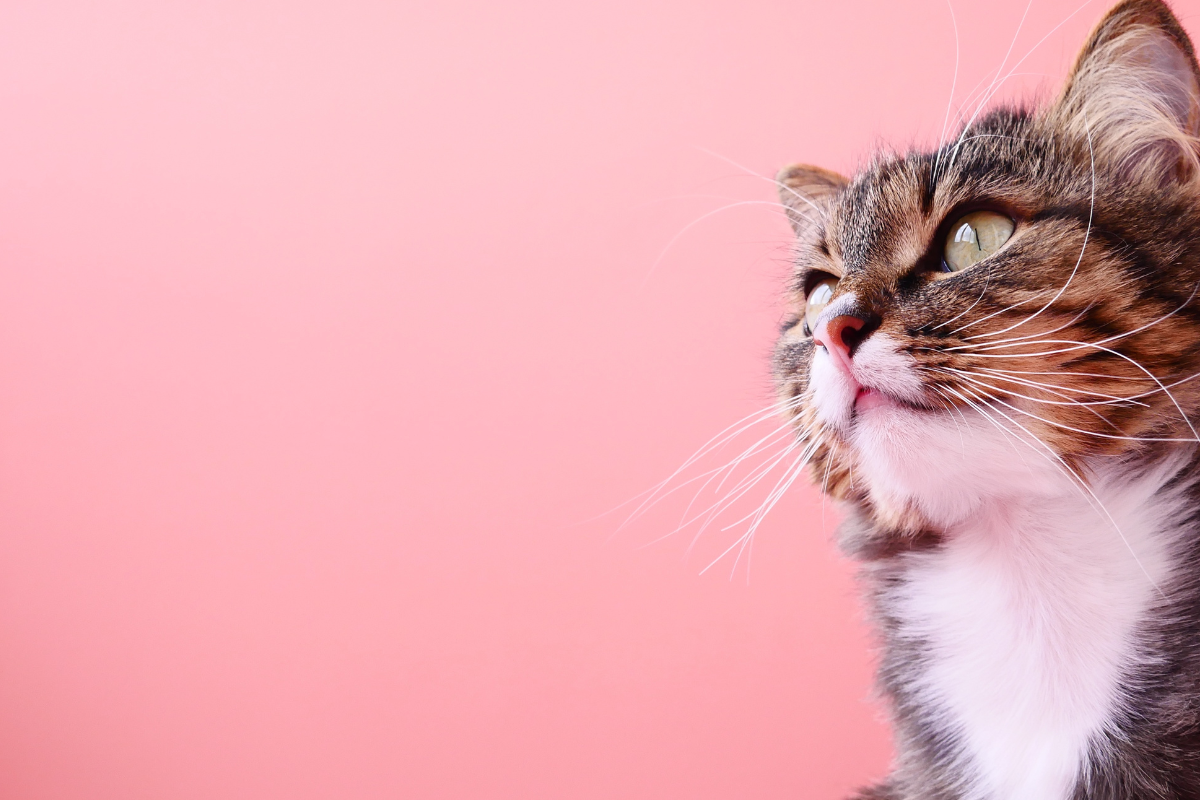The feeding of domestic carnivores has developed considerably over the last twenty years. In veterinary medicine for domestic carnivores,dietetic feeding is the opposite of physiological feeding, which is intended for healthy animals. Dietetic feeding is a complement to treatment, or even the treatment in its own right of certain clinical situations, via the introduction of a special diet adapted to the condition in question.
Chronic renal failure
Chronic kid ney disease (CKD) is often detected late (70% of nephrons are generally already affected). The aim of nutritional support is to restrict phosphorus intake, which is poorly eliminated by the kidneys. In this way, an increase in plasma phosphorus concentration can be avoided, while maintaining calcium levels within a physiological range. This prevents the risk of secondary hyperparathyroidism and renal osteodystrophy, which would lead to mineralisation of soft tissue and excessive mobilisation of bone calcium.
The other aim of this nutritional support is to reduce the quantity of protein. By reducing excretion of the products of protein catabolism, this would avoid overloading nephrons that are still functional. What’s more, feeding high biological value proteins will enable protein intake to be adjusted as closely as possible to the animal’s needs. This will limit the excretion of protein catabolism products.
In addition, metabolic acidosis often occurs during renal failure. It is therefore important to avoid providing a ration that is too acidic. In general, restricting the quantity of protein helps to minimise this metabolic acidosis.
Struvite stones
Struvite or phospho-ammonia-magnesia stones are frequently found in dogs. Urinary tract infections are a predisposing factor in the formation of these stones. In fact, Staphylococcus and Proteus germs possess ureases responsible for converting urea into ammonia. This phenomenon makes the pH more basic and reduces the solubility of phospho-ammonia-magnesium salts, which are responsible for the formation of these stones.
In cats, the frequency of these stones is rarely associated with a urinary infection. These sterile stones are mainly due to a diet that is too rich in magnesium. This causes an oversaturation phenomenon that leads to the formation of stones in the bladder. These stones often tend to recur in cats if their diet is not changed frequently.
To prevent these stones, we try to reduce the amount of phosphorus, magnesium and protein, using high quality proteins to keep the concentration of urea in the urine to a minimum. To dissolve these stones, substances that acidify the urine are added, such as DL-methionine or calcium sulphate.
Finally, to prevent recurrence of lithiasis, calcium intake is often reduced to prevent the secondary formation of calcium oxalate stones. Antibiotic treatment can also be introduced in dogs to eliminate the transformation of urea into ammonia.
Other types of stone
Urate stones :
These stones account for around 10% of cases of urinary lithiasis in dogs. However, they are very rare in cats. They form when uric acid accumulates in the urine. There are two different causes for this accumulation: the first is linked to a defect in uric acid metabolism observed in hepatic shunts.
Purine is converted in the liver, leading to the formation ofallantoin, which is eliminated in the urine. The second cause is seen in certain breeds such as the Dalmatian or the Yorkshire: purine is normally broken down into hypoxanthine, then xanthine, then uric acid, the latter reaction being achieved by uricase, which is often absent in the Dalmatian. The result is an accumulation of uric acid in the urine of dogs of this breed.
Oxalate stones:
The dog breeds most often predisposed to this condition are the Miniature Schnauzer, Yorkshire, Lhasa Apso, Shih-Tzu and in cats, the Burmese, Himalayan and Persian. These stones are fairly common in middle-aged and older animals and affect males much more often than females. They form as a result of excessive saturation of the urine with oxalic acid and calcium. Urinary oxalic acid comes from the metabolisation of ascorbic acid, glycine and tryptophan, but urinary oxalate concentration increases essentially with dietary intake of oxalate.
Calcium absorption varies as a function of parathyroid hormone. This association also varies tubular reabsorption and mobilisation of calcium in bone. Phosphorus and sodium also play a role in calcium absorption. Finally, the addition of citric acid to the ration, which metabolises to bicarbonate, induces a slight metabolic alkalosis, increasing the tubular reabsorption of calcium and reducing its content in the urinary tract.
Moreover, the formation of these stones is encouraged by the acidity of the urine: treatment to dissolve struvite stones often encourages the formation of oxalates via the resulting urinary acidification. The theory is to encourage alkalinisation of the urine to prevent the formation of oxalates, but unlike struvite stones, it is impossible to dissolve oxalate stones through the diet.
Cystine stones:
Cystine stones are rare in dogs and cats, and almost exclusively affect males. Dachshunds and Basset hounds are particularly prone. It is a metabolic error which leads to a molecule of cysteine (cysteine is a semi-essential sulphur-containing amino acid, obtained from food or formed from methionine in the body) being linked to other amino acids to form a molecule of cystine.
The cystine formed in this way is not reabsorbed by the kidney tubules, leading to an accumulation of cystine in the bladder. There are also predisposing factors: the more concentrated or acidic the urine, the more likely it is that these stones will form.
Dietary management strategies for kidney disease
The importance of a tailored diet
The decision to adopt a tailored diet is fundamental to the management of kidney disease in animals. As each animal is unique, its nutritional requirements vary depending on a number of factors such as species, age, stage of kidney disease and the presence of concomitant conditions. According to recent scientific literature, a personalised diet can slow the progression of kidney disease and improve animals’ quality of life.
A tailor-made diet takes into account not only the specific nutritional needs associated with kidney disease, but also the animal’s food preferences, ensuring better adherence to the diet. Veterinary nutritionists play a crucial role in developing these diets, carefully balancing nutrients while minimising stress on the kidneys.
The keys to an effective diet to protect your pet’s kidneys
- Low Protein: Low protein diets are often recommended for pets with kidney disease, as protein overload can increase kidney stress. However, it is essential to maintain a high protein quality to meet the body’s needs without overloading the kidneys.
- Phosphorus control: Restricting phosphorus in the diet is a key strategy in the management of kidney disease. High levels of phosphorus can worsen kidney disease, leading to further deterioration in kidney function. Controlled phosphorus intake can help prevent or slow these effects.
- Sodium management: Reducing sodium in the diet helps to control blood pressure and reduce proteinuria, thereby contributing to kidney health. This is particularly relevant as hypertension is a common aggravating factor in kidney disease.
- Omega-3 fatty acids: Omega-3 fatty acids, particularly EPA and DHA, have been shown to have beneficial effects in the management of kidney disease. They can reduce inflammation and have a protective effect on the kidneys.
- Water balance: Maintaining good hydration is crucial. Animals suffering from kidney disease may have higher water requirements to help eliminate metabolic waste and prevent dehydration.
- Balanced vitamin and mineral intake: An appropriate balance of vitamins and minerals is essential. Supplements may be necessary to compensate for losses due to illness or to meet specific needs.
- Palatability: Palatability of the diet is an important aspect of ensuring that the animal eats enough to maintain its nutritional status. The food must be attractive to the animal while respecting dietary restrictions.
- Monitoring and adjustment: Regular monitoring by healthcare professionals is necessary to adjust the diet according to the progress of the disease and the animal’s response to treatment.
Dietary management of kidney disease requires a holistic approach, which includes regular monitoring and adaptation of the diet to the changing needs of the animal. A carefully designed renal protective diet can play a crucial role in preserving renal function and improving the animal’s quality of life.
Food supplements and medicines
The role of supplements in the management of animal kidney disease
Supplements play a complementary role in the management of kidney disease in animals. They can be used to compensate for the nutritional deficiencies inherent in a diet restricted in certain nutrients, or to offer additional therapeutic benefits. For example, omega-3 fatty acid supplements are recognised for their anti-inflammatory effect, which can help reduce renal stress. Similarly, potassium supplements are often necessary in low-potassium diets, typical for kidney patients, to avoid hypokalaemia.
Other supplements, such as probiotics, can help maintain a healthy balance of intestinal flora, which is particularly important given that kidney disease can affect the digestion and absorption of nutrients. B vitamins, which are often eliminated in large quantities in kidney disease, can also be supplemented to avoid deficiencies.
Interaction between diet and medication
The interaction between diet and medication is a crucial aspect of kidney disease management. Some drugs can interact with nutrients, affecting the effectiveness of treatment or worsening the symptoms of kidney disease. For example, anti-hypertensive drugs, commonly used in the treatment of kidney disease, can interact with high levels of potassium in the diet, requiring careful monitoring and adjustment of both.
It is also important to consider the impact of medicines on appetite and digestion. Some drugs can cause nausea or gastrointestinal upset, affecting appetite and the animal’s ability to consume adequate food. In these cases, it may be necessary to modify the diet to encourage food consumption while respecting the animal’s specific nutritional requirements.
In addition, certain medications can alter nutrient requirements. For example, diuretics, often prescribed for kidney disease, can increase the excretion of certain electrolytes, requiring particular attention to electrolyte balance in the diet.
To manage these interactions effectively, close collaboration between the veterinarian, nutritionist and pet owner is essential. This multidisciplinary approach ensures that the diet and medication plan are harmonised to best support the animal’s renal health.
Medical literature and clinical trials:
- Affinity-Advance veterinary. Product guide 2003
- Baker DH, Czarnecki-Maulden GL, Comparative nutrition of dogs and cats. Annual Review of Nutrition 1991
- Finco DR, Brown SA, Cowell SA et al. Effects of dietary phosphorus and protein in dogs with chronic renal failure. American Journal of Veterinary Research 1992
- Klahr S, Levey AS, Beck GJ, et al. The effect of dietary protein restriction and blood pressure control on the progression of chronic renal disease
- Laboratoire Léo Santé Animale. Guide de nutrition 2001
- Levey AS, Adler S, Caggiula AW, et al. Effects of dietary protein restriction on the progression of moderate renal disease. In the modulation of diet in renal disease study. Journal of the American Society of Nephrology 1996







